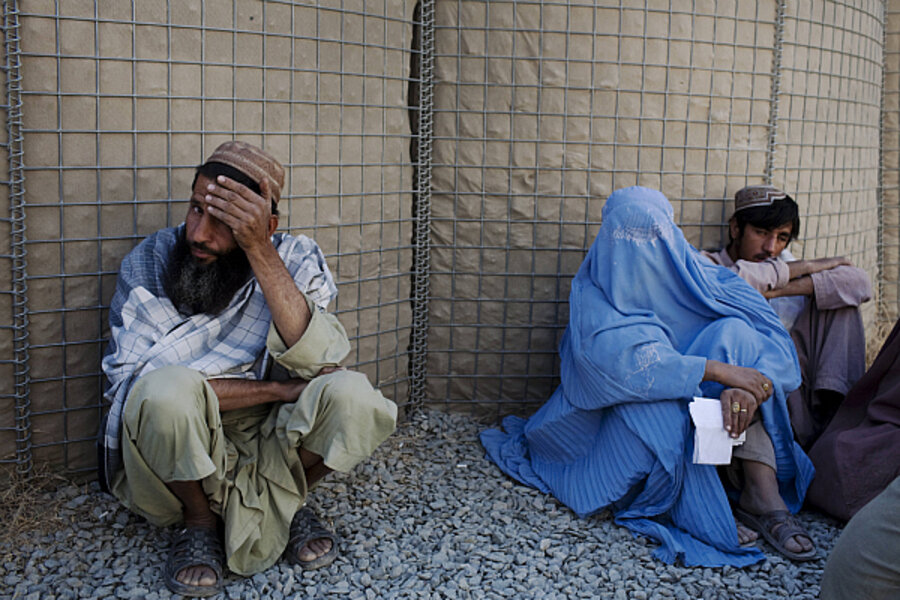Want to know how the war in Afghanistan is going? Watch Kandahar.
| Kandahar City, Afghanistan
For the past decade, the Taliban has held firm control over the small farming village of Malajat, located on the green flatland along the eastern outskirts of Kandahar City. NATO forces and Afghan police refused to enter the area, knowing any attempt to clear the town of military threats would be met with fierce resistance.
But last summer, as part of a United States and Afghan effort to firm up security in the Kandahar province – Afghanistan’s second largest province and the nucleus of Taliban resistance – a large contingent of coalition troops entered and removed improvised explosive devices in Malajat. Insurgents were killed or forced underground. As a result, children can be seen walking to and from school, where it was once unthinkable.
The Malajat offensive is part of a larger coalition effort to win control of Kandahar from the Taliban. Combat operations are ongoing in the Arghandab, Zhari, and Panjwai districts just outside of Kandahar City. Operations similar to the Malajat offensive are taking place to secure the city from insurgents. If the Kandahar offensive is successful, coalition forces will control the last and largest Taliban stronghold. If unsuccessful, the failure to win Kandahar could set back the faltering war effort.
Despite circumstantial evidence from Kandahar City and the surrounding battlefields, it is too early to tell whether the US strategy here is a success. Gen. Ben Hodges, the director of military operations for Regional Command South, says coalition forces control 90 percent of the Arghandab, and that fighting in Panjwaii and Zhari is progressing well. However, media access to the battlefields has been limited, and US officials have yet to reveal detailed assessments of the operations.
Past attempts to control Kandahar
In the past, attempts to control Kandahar City and its estimated 500,000 residents have been futile. The city has been a center of Taliban resistance since the beginning of the war. Violence and lawlessness have continually undermined NATO efforts here.
But according to General Hodges, efforts to control Kandahar City are now beginning to bear fruit. The security situation in and around Kandahar City has stabilized and the Taliban no longer dominates the city, he says.
“The security forces are providing a level of security that is allowing [life in Kandahar City] to take place,” Hodges says in an interview with the Monitor. “There is a presence of security that is a lot more prevalent and reassuring than at any time in the past."
Malajat offensive, security ring part of the surge philosophy
The Malajat situation is an example of the kind of process US and Afghan forces want to replicate throughout Kandahar City, according to Hodges and Gen. Jeffrey Bannister, who will replace Hodges next month.
After insurgents were forced out, security checkpoints were set up throughout Malajat. US and Afghan forces now conduct routine patrols each day. Around the city, coalition forces have constructed what Hodges called a “security ring” of checkpoints and police stations meant to emphasize NATO and Afghan security presence.
During a tour of Kandahar City on Tuesday, Bannister says that the clear-hold-build process and the security ring are the result of the 30,000 troops added to the region by President Obama earlier this year, as well as a more aggressive campaign by coalition forces.
“This is all part of the surge philosophy,” Bannister says. “Were buying time for the Afghans to build capacity. We’ll stay until we aren’t needed, under the current strategy.”
Afghan security forces key in Kandahar, but unreliable
Despite the large coalition presence, Hodges and Bannister say they key to Kandahar City’s long-term stability is Afghan security forces. The US, the generals say, has had success working with the Afghan National Civil Order Police (ANCOP), Afghanistan’s elite special police force. Together with coalition forces they have partnered successfully at checkpoints throughout Kandahar.
The Afghan National Police, however, do little to inspire confidence. Drug use and illiteracy are common in the ANP. Compelling officers to do basic police work is difficult.
“Police sit at checkpoints … but they don’t do investigative work,” Hodges says. “Police are always going to be looking over their shoulder…they’re worried about retribution.”
Similar questions surround the readiness of the Afghan National Army. Backed by the 101st Airborne Division, ANA troops have begun operations in the Arghandab, Zhari, and Panjwai areas outside of Kandahar City. Hodges says that NATO forces control 90 percent of the Arghandab Valley. According to reports, when 800 Afghan troops were told prior to their deployment that they would be fighting in Taliban strongholds, nearly one-quarter deserted. Another 150 Afghan soldiers have since disappeared.
Evidence of success elusive
“Clear-hold-build operations are notoriously hard to assess in their early stages,” says Stephen Biddle, a defense expert and senior fellow at the Council on Foreign Relations. “Finer-grained observations are needed to make good early judgments. … That kind of information is always in short supply.”
While Kandahar City appeared calm Tuesday, evidence that combat was continuing nearby was easy to spot. Explosions rang in the distance, across the Arghandab valley Tuesday evening. Hodges then pointed out columns of smoke. The explosions, he says, were caused by mortar fire.





